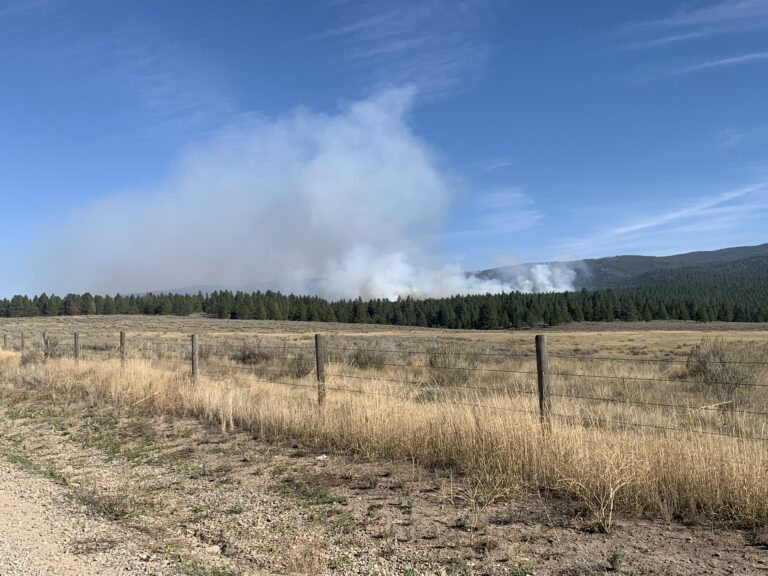By Cindy Super, Blackfoot Challenge Forestry Coordinator
This fall, partners throughout the Blackfoot Valley have been quietly (and sometimes not so quietly) working hard to restore fire on the land. Since the end of September, various members of the Blackfoot Prescribed Fire Working Group have accomplished nine separate burns treating more than 700 acres. And we might not be done yet! Fires have been conducted by the US Forest Service, Bureau of Land Management, The Nature Conservancy, Montana Fish, Wildlife, and Parks, University of Montana, and private landowners. Support to conduct these projects has come from all of those plus the Montana Department of Natural Resources and Conservation, Missoula Rural Fire Department, Helmville Volunteer Fire Department, Ovando Volunteer Fire Department, private contractors and others are scheduled to help out later this fall.
Most of these burns were on single ownership lands, but a few covered multiple ownerships (USFS and private, BLM and USFS, FWP and private) and nearly all of our prescribed fire practitioners are working toward many more cross-boundary burns. All prescribed fires were conducted with resources from multiple agencies as folks had time and availability to help out.
Fire is important for many reasons. Many of the plants and animals that make their homes in the Blackfoot were accustomed to fire. It is estimated that a fire would happen in a given area every 5-25 years prior to fire suppression efforts. Many of these early fires were set by humans. Fire will reduce the amount of fuel that accumulates on the ground. It will kill some (typically not all) young trees in a mosaic pattern, leaving a patchwork appearance. Fires are responsible for restoring native grasses and forbs, and “pruning” lower branches of some trees such as ponderosa pine. Lodgepole pine, specifically, depend on fire to open their serotinous cones to allow for a pulse of new seedlings after a fire. The benefits of fire are too numerous to list here!
According to the website mtfireinfo.org, so far this year we have had 1,970 wildfires in the state of Montana. We definitely live in a fire-prone area. Prescribed fire is one of the more important tools we have for making wildfires less severe. We have the opportunity now, when the weather is cooler and days are shorter and when winter precipitation is on the way, to allow fire to burn under moderate to low fire danger conditions. We will have another opportunity for controlled burns in the spring.

The greatest advantage with prescribed fire is that we can choose when and where the fire will happen. We can mechanically treat the area ahead of time, reducing the overall amount of fuel available to burn. We can use common sense fire lines that can be planned and improved before a burn. We can notify local residents of the intention to burn, allowing people to make plans if they are sensitive to smoke. And we can incorporate private property into our plans where landowners are interested.
The most noticeable impact with prescribed fire is smoke. Prescribed fire smoke is typically much different than wildfire smoke. The combustion process can be different. The duration is typically much shorter. And communities have more of a heads up. For most people, the smoke is, at worst, a nuisance. But for many, smoke is a considerable problem. The Missoula County Health Department offers considerable resources to help people deal with smoke and other air pollutants. At the end of the day, a manageable level of prescribed fire smoke is aimed at preventing an extreme level of wildfire smoke that impacts so many people.
If you would like to learn more about prescribed fire, take part on the Blackfoot Challenge’s Prescribed Fire Working Group, or inquire about using prescribed fire on your property, you may contact Blackfoot Challenge Forestry Coordinator Cindy Super at cindy@blackfootchallenge.org.
